The Honda vs. Toyota rivalry has been going on for decades and in many ways its stronger than ever here in 2025. One of the hottest segments on the market is the rugged two-row midsize SUV, and both Honda and Toyota just released new options that are now arriving at dealers: the all-new Honda Passport and the all-new Toyota 4Runner. While in many ways they are fundamentally different, they share a lot of the same mission and have more similarities than you might realize. So, who wins in a 2026 Honda Passport vs. 2025 Toyota 4Runner battle? Well, that’s what we’re diving into today!
Pricing and Equipment
We’re going to go over all the features, discuss the advantages and disadvantages of each model, but first, let’s quickly talk pricing.
As you know, prices have been increasing across the industry in recent years and both these two are impacted by that. For today’s comparison, we have both SUVs equipped to the low-$50,000 price point. But the thing to remember is that that amount of money gets you a loaded Passport but only a mid-tier 4Runner, since the Toyota now tops out at nearly 70 grand this year.
4Runner TRD Sport 4WD: $49,250 | Options: +$490 | Destination: $1,450 | Total: $51,190
Passport TrailSport Elite AWD: $52,450 | Options: +$0 | Destination: $1,450 | Total: $53,900
Exterior Design
I just mentioned that these two SUVs are rugged, and the designs visually preview that. They have boxy and rugged-looking exterior designs, fully redesigned this year with all the latest-and-greatest elements, such as upgraded LED lighting.
On the 4Runner, that means you have a projector LED low and high beam, compared to the Passports’ cheaper reflector LED style. But it’s only the Passport with distinct amber DRLs and LED turn signals. And both include LED fog lamps.
Moving to the side, you’ll see boxy designs for both SUVs. The 4Runner is about 3 inches longer overall than the Passport, and before we get too deep into this comparison, I want to mention the actual platform differences. The Honda Passport is based on the Honda Pilot, which means it is riding on a unibody crossover platform, while the 4Runner continues to be based on a body-on-frame truck platform. We will be extensively discussing the capability differences later.
Length: 194.9-inches (4Runner) | 191.5-inches (Passport)
As far as the wheels, we have some differences. The TRD Sport 4Runner is rocking 20-inch contrast alloy wheels, while the largest size you can get on any Passport is 18 inches. As equipped, however, the 4Runner has all-season tread while the TrailSport Passport has all-terrain tires for more capability. While that certainly is available on other versions of the 4Runner, we’ll give each a half-point advantage for wheel size and tire capability.
Both have beefy wheel surrounds, with the Passport’s finished in matte versus the body color on 4Runner, and as we head around to the back, both look fully modernized. Features wise, they are quite different, however. Only the 4Runner has a full-LED taillight unit for even things like the turn signal plus a hidden rear wiper to reduce weathering. In addition, even though both tow a good amount, the body-on-frame 4Runner can handle 1,000 pounds more at 6,000 pounds total.
Towing (max): Passport: 5,000 lbs | 4Runner: 6,000 lbs
Additional Features
Now let’s check out the mirrors. While both have heating and blind spot monitoring, only the Passport includes power-folding and even auto-dimming.
Being safe is a priority for anyone looking to buy a new vehicle, and indeed they are including every single active safety feature as standard equipment. Warranty-wise, Honda and Toyota back their products for the same length of time, however, Toyota includes an extra year of complimentary maintenance over the Passport.
4Runner: Warranties: Basic Warranty: 3yr/36k mi | Powertrain: 5yr/60k mi | Complimentary Maintenance: 2yr/25k mi
Passport: Warranties: Basic Warranty: 3yr/36k mi | Powertrain: 5yr/60k mi | Complimentary Maintenance: 1yr/12k mi
Now, even as different as they were on the outside, things get different on the inside, so let’s move on to that.

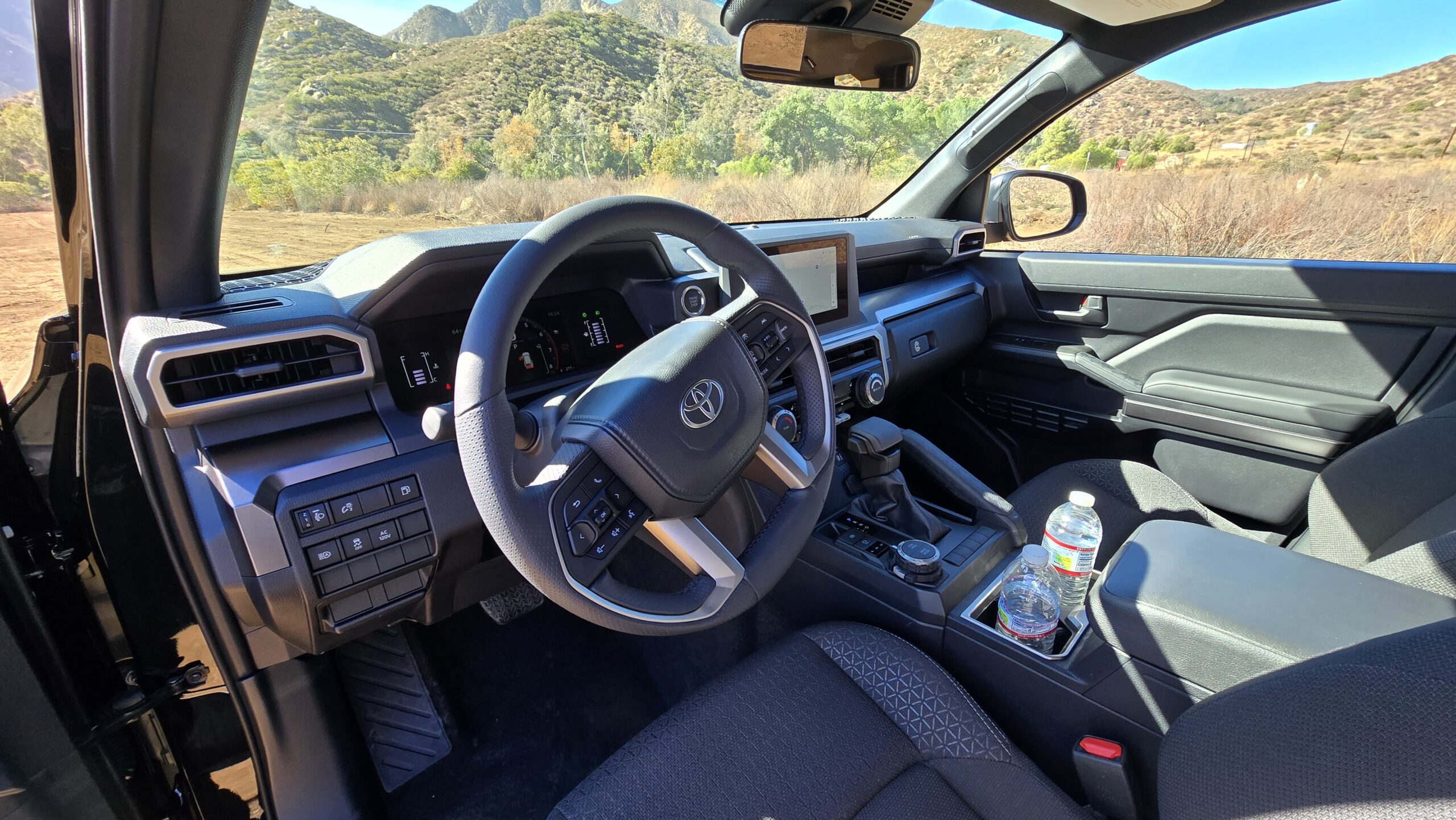
Interior Design
Alright, let’s move into the cabins. Approaching the SUV’s, they have their brands respective key fobs for standard smart entry systems, but only the Honda includes remote start built-in, subscription-free for life.
Note: Toyota includes it via phone app or fob via subscription after the trial period expires.
Now once we open the doors, you’ll notice they have completely different design themes. The 4Runner has a more truck-like experience, while the Passport borrows much of its interior from the related Pilot. There’s a lot to consider but let’s start with the seats.
First of all, for adjustments, the Passport has a 10-way power adjusting seat, while the more bare-bones 4Runner has a fully manual seat in this trim.
Additionally, it’s only the Passport that includes real leather seating which instead is a cloth seat for the TRD Sport 4Runner. And finally, Passport has seat ventilation and memory which aren’t offered on the 4Runner until you get a more expensive trim level.
But now it’s time to climb inside and talk about the rest of the materials. Here, the trend continues in favor of the Passport since it has extensive use of soft touch plastics and leatherette compared to the very basic hard touch plastics found in the 4Runner. It will take the materials point but of course keep in mind more expensive 4Runners can get better materials inside.
After startup, you’ll see a 10.3-inch gauge cluster on the Passport and a 12.3 inch one on the 4Runner. That’s a roughly 20% advantage for the Toyota, and neither have head up displays as equipped.
Pulling back, the Passport has rain-sensing wipers, and both have a heated steering wheel.
Storage and Technology
But another area of importance is interior storage, and here both SUVs fair well. The Passport does better though, with a larger center console that can hold a whopping 19 donuts in addition to a large front bin and storage shelf. 4Runner also has a storage shelf and front bin with a wireless charger, but it’s still not quite as big as the Honda.
Shifter-wise, the Passport has a push-button setup and the 4Runner a traditional style. When in reverse, the Honda has a 360-degree camera, which you don’t get until the higher-end 4Runners.
For climate, the Passport once again has the advantage with a 3-zone system compared to the single-zone setup on 4Runner. Both use nice feeling physical knobs for easy adjustment.
And speaking of knobs, that now brings us to the volume knobs. The Passport does have a 4-speaker advantage for its system and that difference can be heard audio quality wise.
4Runner: 8-speaker sound system
Passport: 12-speaker Bose Premium Audio
But now it’s time to look at the elephant in the room: the main infotainment screens. Even though the 4Runner is all-new this year, the mid-tier TRD Sport trim only comes with an 8-inch screen instead of the larger 14-inch setup that’s available. That’s certainly disappointing especially when you compare it to the 12.3-inch setup Passport includes on all trims.
Besides that, for software, they have built in navigation, but only the Honda Passport has Google built in. That’ll give you access to Google Maps plus things like Google Assistant, and both have wireless CarPlay and Android Auto included.
Last but certainly not least for the front of the interiors, both models have auto-dimming mirrors, but only the Passport includes a large panoramic sunroof.
LOOKING TO BUY One OF THEse VEHICLES?
A smart next step would be to check our Car Quote Tool. This tool will connect you with local dealerships in your area to get you the BEST price, access to INVOICE PRICING information, and a monthly payment calculator. Get dealerships to compete for your business!
Rear Seats and Cargo
Now you’ve seen so far that these two are very different from one another and that trend will continue as we head to the rear seats. First off, let’s talk space. The Passport comes in at an impressive 41 inches of legroom and over 40 inches of headroom, which surpasses the 4Runner by a significant 16% and 7% margin for legs and heads.
- Passport: Legroom: 40.9-inches | Headroom: 40.7-inches
- 4Runner: Legroom: 34.8-inches | Headroom: 37.8-inches
And as far as the features back here, they have an almost identical list of niceties to ward off any complaints. There are rear vents, USB ports, and household power outlets in both. Passport additionally adds rear sunshades, and the seats themselves are heated to make your experience even better.
Now I think you’ll be pleasantly surprised by both models when it comes to how much space you have when the tailgates open up. It’s a power tailgate on the Passport, but only the 4Runner includes the rear glass that can roll down independently.
But as far as those numbers, they are quite impressive. 4Runner does have a significant advantage in both space figures behind the 2nd row and with the seats folded down, but keep in mind both are offering very good figures for this segment.
Passport: 2nd Row: 44.0 cu.ft | MAX: 83.8 cu.ft
4Runner (Gas 2 Row): 48.4/90.2 cu.ft
I also want to mention briefly that the 4Runner can be had with a third row, but it’s only on 2 specific trim levels, one of which is not this TRD Sport.
Finally, both have spare tires for any off-roading mishap you might have.
But now it’s time to see how they perform behind the wheel!
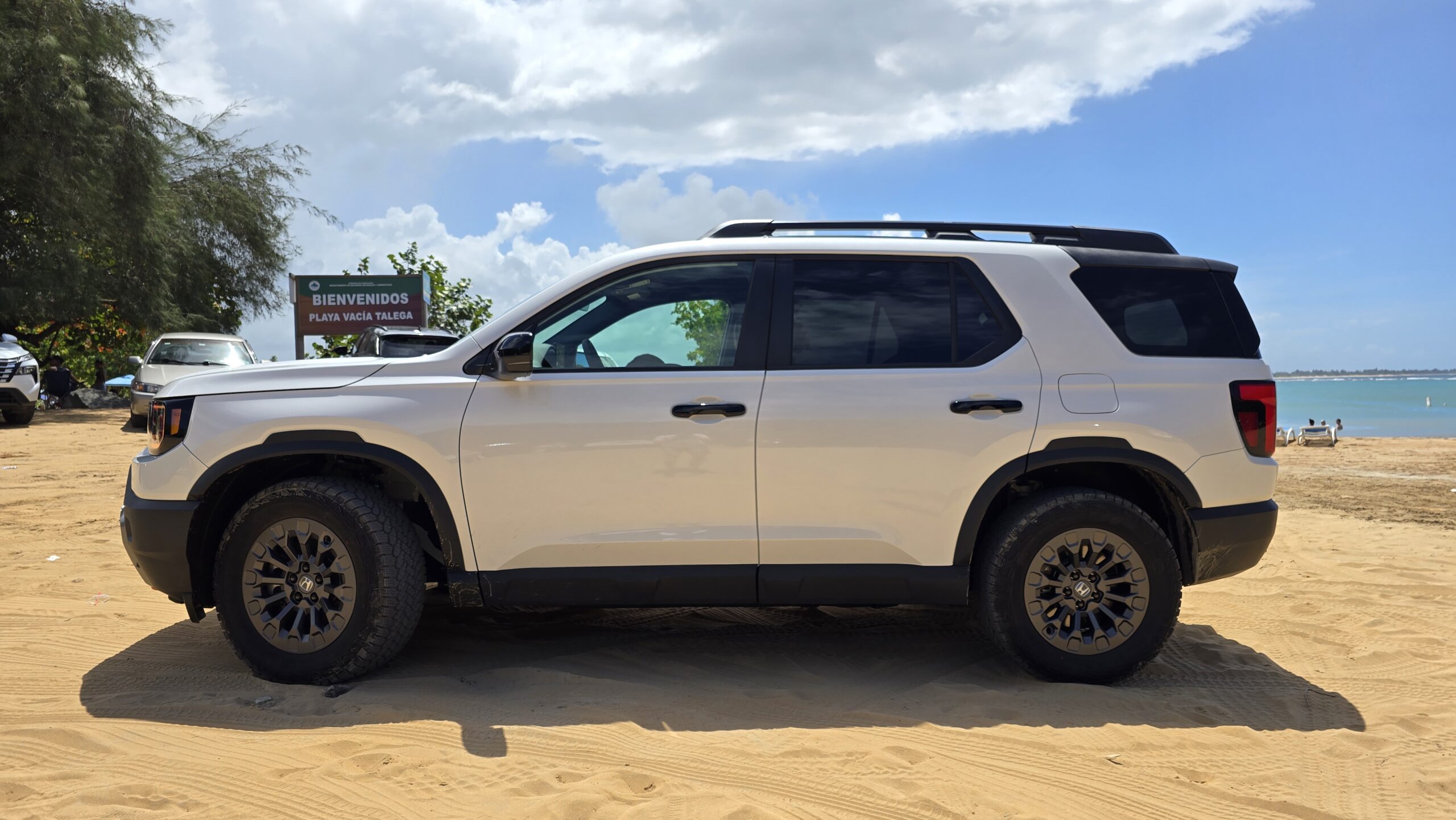
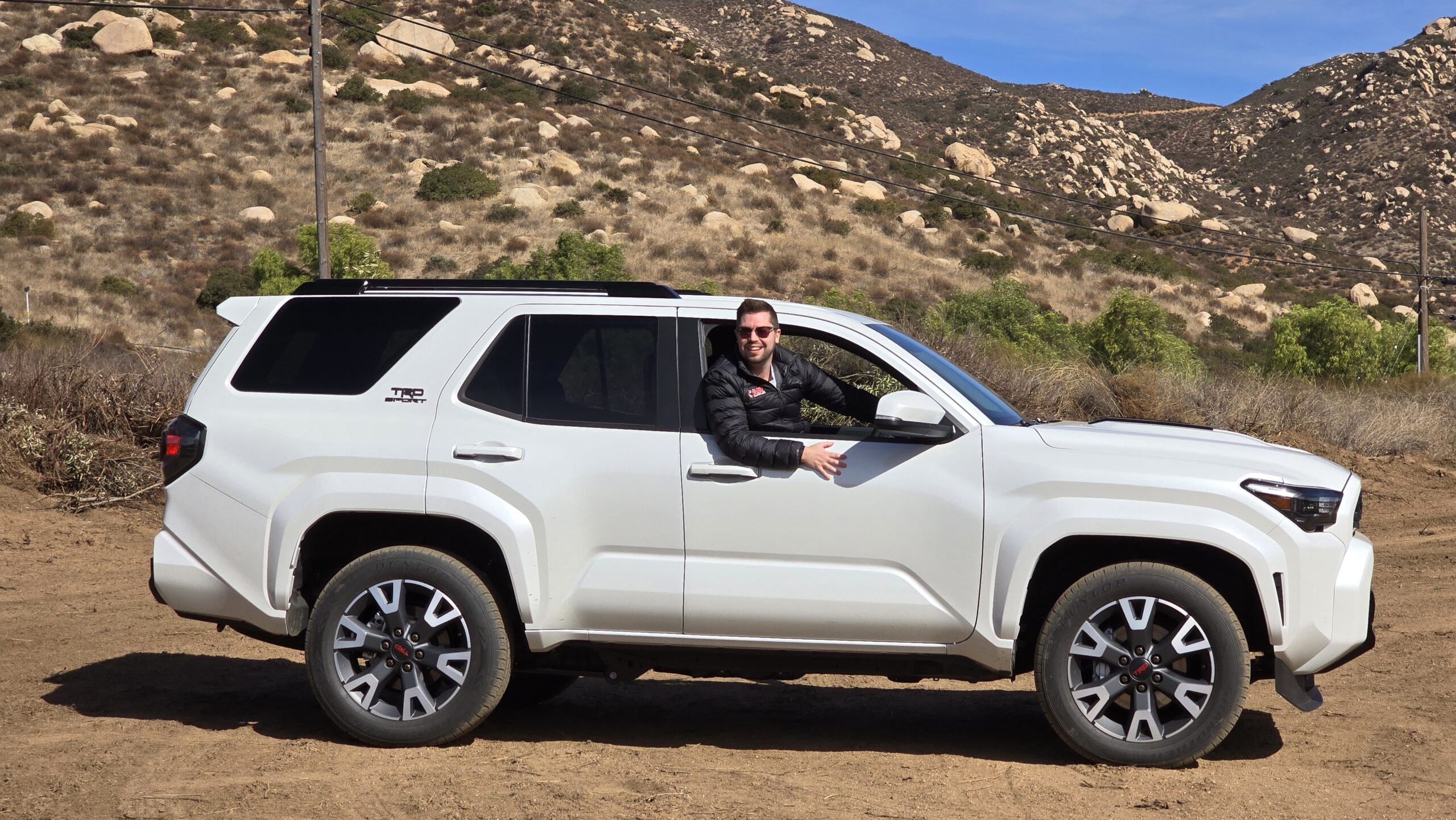
Powertrains
So, as we’ve been going through this comparison, you’ve certainly realized there are a lot of considerations when shopping between them, and that’s only going to continue under the hoods. The Passport goes the tried-and-true route and keeps a naturally aspirated 3.5L V-6 engine, making 285 horsepower. 4Runner, on the other hand, goes for a 2.4L Turbocharged 4-cylinder instead, and it makes a similar overall horsepower figure of 278. While horsepower numbers are nearly identical, the torque figures certainly are not. The turbocharged Toyota has about 19% more torque which can be felt out on the road.
- Passport: 3.5L V6: 285 hp | 262 lb.ft of torque
- 4Runner: 2.4L Turbo I-4: 278 hp | 317 lb ft
But we also can’t ignore the fundamental differences between a turbo-4 and a V6. The Passport has a more refined and premium NVH which makes it feel like a more luxurious experience. Many people also prefer the simplicity of a V-6 for potential future reliability.
As far as the rest of the powertrains, let’s talk transmissions. The Passport has a 10-speed automatic and the 4Runner an 8-speed. Everyday performance is smooth and refined in both, and power is fed to the ground via a torque vectoring AWD in the Honda or a full-time 4WD system in the 4Runner.
Test Drive and Fuel Economy
Speaking of differences, lets dive into some details about their off-road ability. The 4Runner has about a half inch more ground clearance, however, it’s only the Passport that has real metal skid plates as equipped.
That, of course, is available in other trim levels of the 4Runner, and both have good approach and departure angles. The TRD Sport is one of the most street-oriented trims of the 4Runner, which makes it quite comparable to the Passport and its unibody platform. The ceiling of capability is higher in the 4Runner though, with rear and center locking diffs and sway bar disconnect being available on the harder core 4Runner trims.
Ground Clearance:
- Passport: 8.3 inches
- 4Runner: 8.8 inches (TRD Sport)
Now it’s time to dive into these SUV’s ride qualities. Because of that fundamental difference in platforms, the Passport does have significantly better on-road driving dynamics and ride quality. 4Runner certainly isn’t bad, but those taking frequent, long road trips will appreciate how the Passport cancels out the small and large road imperfections, and exhibits better body control when cornering.
But how quiet are the cabins? A signature Car Confections element is collecting sound level readings for all the vehicles we review at 55MPH, unless there is some kind of extraneous circumstance. Unfortunately, this is one of those times, since the media drive of the Passport was in Puerto Rico and the 4Runner in California. Because of this, it can’t be scored officially but here is the 4Runner’s reading for your reference until we get them back to Kentucky.
Passport: – dB @ 55 MPH
4Runner: 56.5 dB @ 55 MPH
Lastly, for fuel economy, despite their big differences in cylinders and platforms, the number equates to only a 4.9% difference in real world. That’s not enough to get a point, but keep in mind 4Runner does also offer hybridized versions with more power and slightly more efficiency.
- Passport AWD: 18/23/20 MPG
- 4Runner 4WD: 19/25/21 MPG
Reliability, Resale, and Value
In our reviews and comparisons, we are also adding in reliability and resale information to give you a better picture of the overall value beyond just the original MSRP.
Beginning with reliability, we developed the Combined Reliability Index, which takes into account several studies from trustworthy sources, and combines them in a way that gives a more realistic picture. They both excel here, with Honda ranking in at 13 slots above the industry average for all brands in reliability, while Toyota is the highest rated brand at 15 spots above average.
We also put Mason’s economics degree to work to develop a detailed Predicted Resale Value tool. After 5 years and 60,000 miles, they excel again with Honda having a fantastic predicted resale value of 64.8% and Toyota at 64.5%.
Resale is obviously important because it determines how much money you get back, but we can’t forget about the price difference at the original purchase. In this comparison, the TRD Sport 4Runner costs about $2700 less than the TrailSport Elite Passport despite most 4Runner trims costing more than the Passport.
I want to emphasize that if money, reliability or resale value matter less to you personally, feel free to disregard these points. And if you’d like to check out all our data about reliability and resale values, as well as learn about our methodology, make sure to head to www.carconfections.com/resale and www.carconfections.com/reliability. Buying a car is a big decision, and this is a great place to compare all the makes you might be cross-shopping.
2025 Honda Passport vs. 2025 Toyota 4Runner Winner!
So, there you have it; these two fought hard and the real winner are the customers that get so many great options to pick from in this class. But, nevertheless, let’s discuss who should be “your” personal winner…
4Runner:
- Body on frame advantages (towing, off-road capability)
- Larger cargo capacity (and available 3rd row)
- More torque/better fuel economy
Passport:
- More features for the money (fully loaded vs. lowly equipped)
- Better technology (Google built in, larger screen)
- On road comfort/ rear seat space
Now we want to know your opinions, so make sure to head to the comment section and let us know which one you would pick!
Thanks for joining us for another Car Confections Comparison! We’ll catch you next time as we sample the latest automotive delicacies!

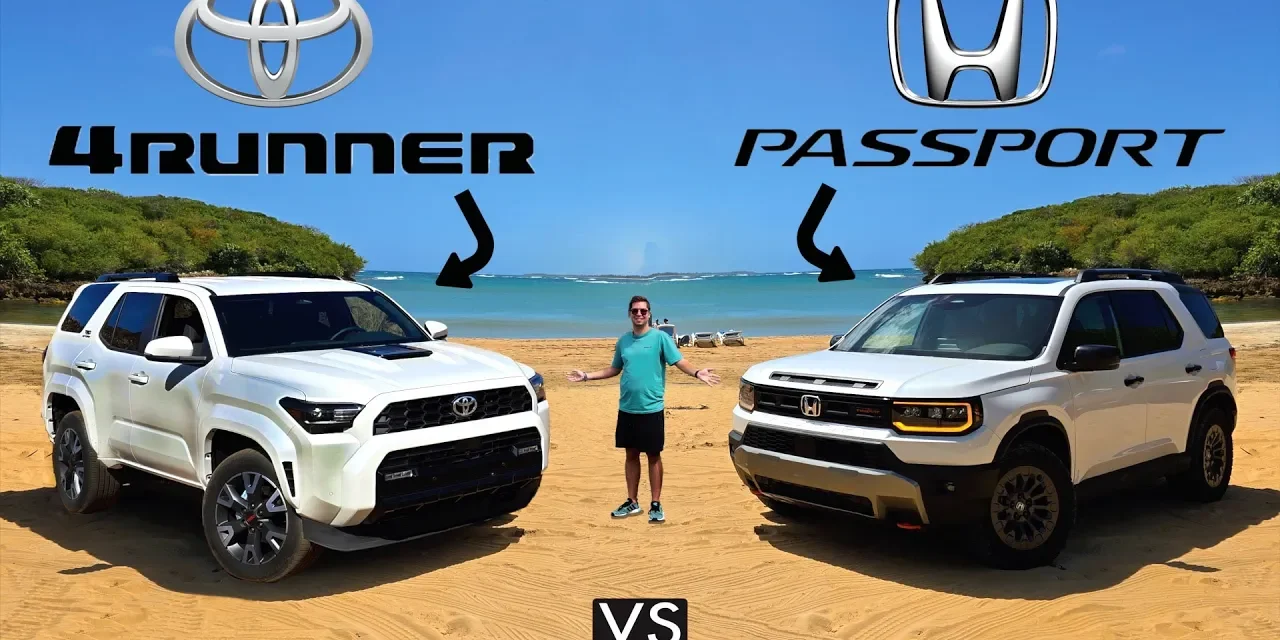

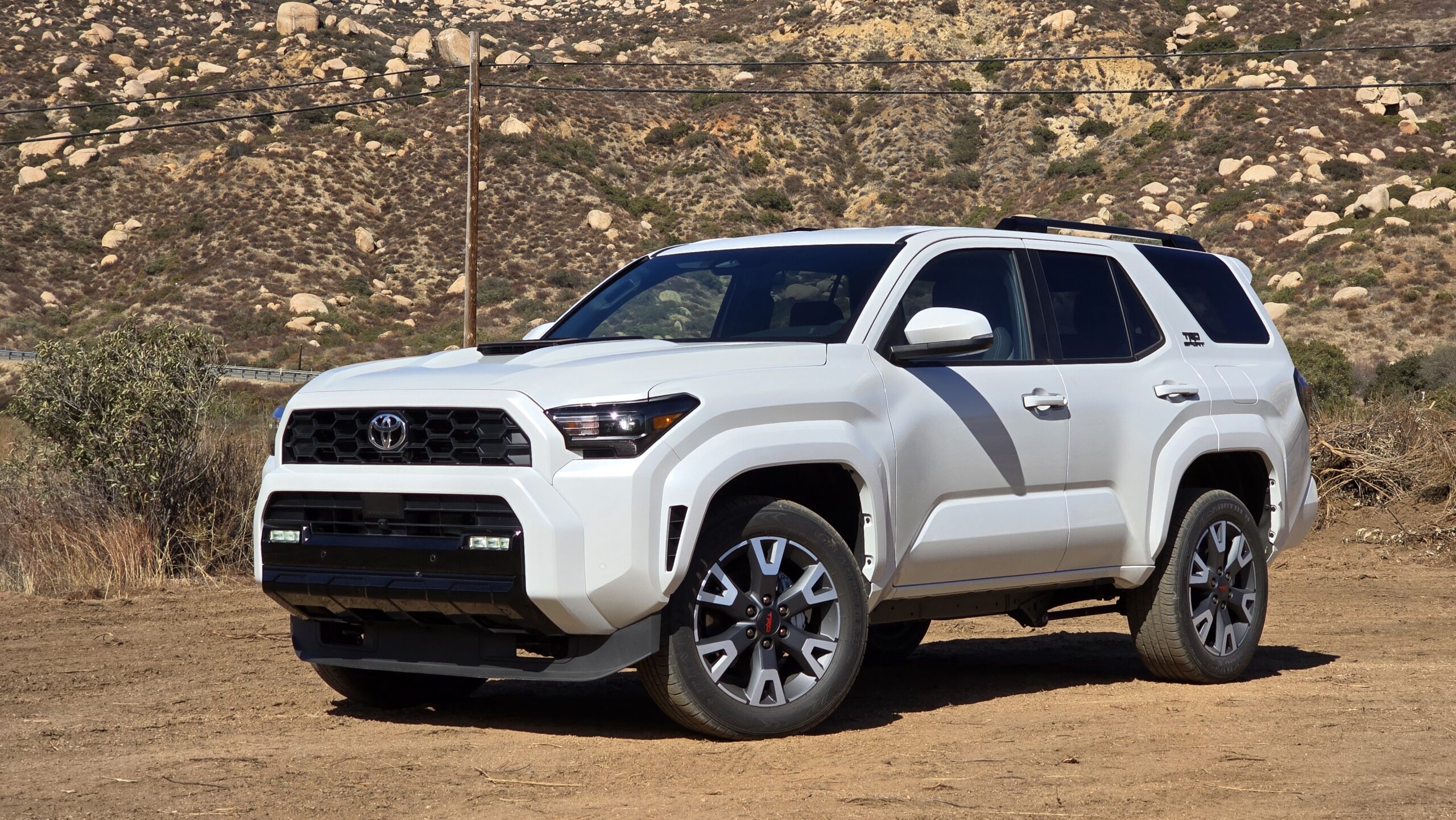
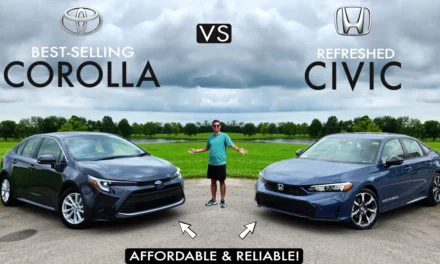

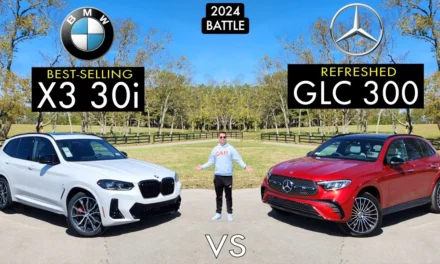







Recent Comments